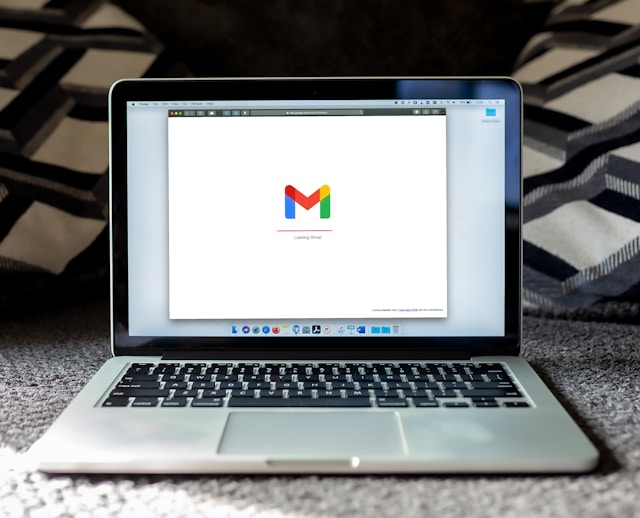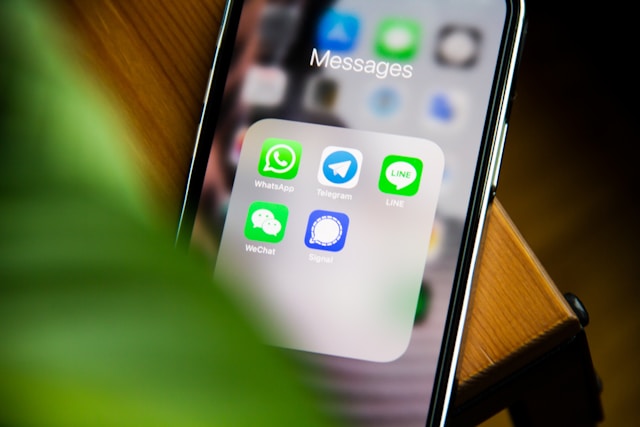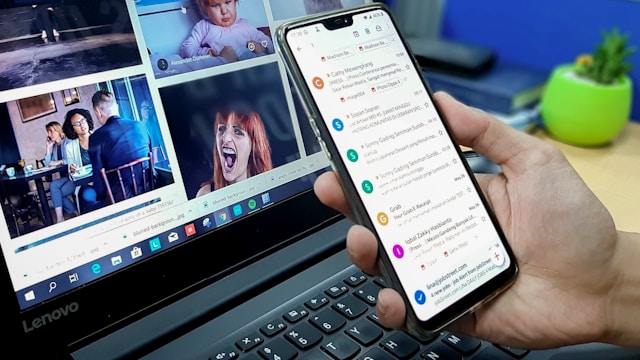Email automation and customer journeys are key tools at Labridge Digital Marketing. They help us send the right messages at the right time to each customer. This makes each customer’s experience with us smooth and personal. For example, when someone signs up for our service, they immediately get a friendly email. This first message starts building a connection between us.
Furthermore, managing these journeys means more than just sending emails. It involves creating a connected experience that reacts to what customers do. So, each email is part of a larger, tailored conversation we’re having with them. Also, by setting up these emails to send automatically, Labridge Digital Marketing makes sure every message is consistent and timely. This saves us time, letting us focus on new ideas and taking care of our customers.
In simple terms, using email automation and customer journeys well helps us keep customers engaged and helps our business grow. This method not only keeps our customers happy but also lets us see what they like and don’t like. Therefore, we can keep improving how we market to them.
Understanding Email Automation

Email automation and customer journeys are vital in today’s marketing landscape, especially in email marketing in the Philippines. This tool sends emails automatically based on specific customer actions. So, it’s like having a conversation where the timing and response are always perfect.
What is Email Automation?
Email automation is a system that sends out emails to customers automatically. To clarify, these are not random emails. They are triggered by specific things a customer does. For instance, signing up for a newsletter might trigger a welcome email.
Key Components of Email Automation Systems
Several parts make up an email automation system:
- Trigger Events: These are actions by the user that start an email campaign. For instance, downloading a guide from a website can trigger a follow-up email.
- Email Templates: Pre-designed emails that are ready to send. Also, they change slightly based on the user’s name or other personal info.
- Mailing List: A list of email addresses that your campaign will target.
Campaign Management Tools
Software that lets you set up and manage your email scenarios.

See How My Team Can Drive More Traffic to Your Website
- SEO – unlock more SEO traffic. See real results.
- Content Marketing – our team creates epic content that will get shared, get links, and attract traffic.
- Paid Media – effective paid strategies with clear ROI.
Analytics Tools
These tools measure how well your emails perform. Therefore, they track opens, clicks, and conversions.
Benefits of Email Automation and Customer Journeys in Marketing
Email automation brings many benefits:
- Efficiency: Automating the email process saves a lot of time. You set up the campaign once, and it runs by itself.
- Personalization: Emails feel more personal because they respond to the user’s actions. This can make the customer feel more connected to your brand.
- Consistency: It ensures that each customer receives the same quality of communication.
- Scalability: Email automation lets you reach more customers without extra work. No matter how many people join your list, they all get the same attention.
In essence, email automation and customer journeys are about making marketing smarter, not harder. They assist companies in delivering the appropriate message at the optimal moment. This boosts engagement and conversions. So, this system is not just about sending emails. It’s about creating an ongoing, productive dialogue with customers.
The Role of Customer Journeys in Marketing

Knowing how customers interact with your brand from start to finish is key for good marketing. That is to say, email automation and customer journeys work together to keep communications right on target at every step.
What is a Customer Journey?
A customer journey is the complete experience someone has with your brand, from first hearing about you to becoming a loyal customer. In other words, it’s like following a path where each step is an opportunity for you to make a connection.
Why Customer Journeys Matter in Marketing
Customer journeys are important because they help marketers understand how customers make choices. Therefore, knowing this allows marketers to craft messages that hit the right note at the right time. Simply put, if you know the journey, you can make the ride smoother and more enjoyable for your customers.
Adjusting Email Automation for Each Stage of the Customer Journey
You can tweak email automation and customer journeys to suit different parts of the customer journey. So, here’s what that looks like:
Awareness Stage
This is the stage when individuals first become aware of your brand. That is to say, emails here should be welcoming and informative, introducing who you are and what you stand for.
Consideration Stage
Customers are thinking about buying. So, your emails now should go into more detail about your products or services, highlighting key features and benefits.
Decision Stage
When customers are ready to buy, your emails should help nudge them toward making a purchase. Also, you might include special offers or limited-time discounts.
Loyalty Stage
After a purchase, the aim is to keep customers coming back. Therefore, your emails should thank them, seek feedback, and offer support. This builds a stronger bond and encourages loyalty.
Advocacy Stage
When customers love your brand, they can help spread the word. So, encourage this by emailing them requests to share their positive experiences online or with friends.
In short, understanding the customer journey lets you send perfectly timed messages. Email automation ensures these messages are relevant and timely. By matching your emails with where customers are on their journey, you create better experiences. This leads to more engagement and loyalty, making email automation and customer journeys a powerful tool for marketers aiming for long-term success.
Setting Up Your Email Automation Workflows

Setting up email automation workflows is a big part of managing how you connect with customers through emails. That is to say, it helps send the right messages at the right time, making sure you keep engaging your customers without always having to do it manually.
How to Set Up Email Automation Workflows
To get your email automation working smoothly, you can follow these straightforward steps:
- Define Your Goals: Think about what you want to achieve with your emails. For instance, are you looking to increase sales, get more people to sign up for your newsletter, or keep your current customers coming back?
- Segment Your Audience: Break your audience into smaller groups based on what they like, what they do, or where they are. This helps make your emails more personal and relevant to each group.
- Choose an Email Marketing Platform: Pick a service that lets you do the automation you need. Some popular options include Mailchimp, HubSpot, and Constant Contact.
- Create Your Email Templates: Make email templates for different parts of your customer’s journey. Make sure these look professional and match your brand’s style.
- Set Up Triggers and Conditions: Decide on triggers that will automatically send an email when certain things happen. This is what makes automation so useful.
Different Triggers and Conditions to Use
You can set up various triggers and conditions to customize your emails perfectly for your audience:
- Sign-Up Triggers: Send a welcome email when someone new signs up. Inform them about what will happen next.
- Engagement Triggers: If a customer keeps looking at a product but hasn’t bought it, you might send them a special offer or more details about the product.
- Anniversary Triggers: Send a thank you message or a special discount on a customer’s one-year anniversary with your brand.
- Inactivity Triggers: Send a friendly note to bring back customers who haven’t interacted with your emails in a while.
Making Your Emails Custom and Relevant
To make your emails feel more personal, use information from how customers interact with your brand. Add their name, mention products they like, and refer to past interactions. This makes the emails more relevant and helps build a stronger connection.
In essence, setting up email automation workflows is all about making sure you communicate effectively and timely with your customers. By clearly setting goals, understanding your audience, and using automation features smartly, you can make your marketing both efficient and effective. The aim is to send emails that feel personal and arrive just when your customer needs them, which will help keep them engaged and loyal to your brand.
Best Practices for Personalizing Emails

Personalizing your email automation is key to making each customer feel special. That is to say, it’s not just about adding a name to an email; it’s about making each message feel tailor-made for the person reading it.
Why Personalization Matters
Personalizing emails can make a big difference. Therefore, when emails feel personal, people are more likely to open them, read them, and take action. So, this means better results for your marketing efforts because you’re speaking directly to what each customer likes or needs.
How to Segment Your Audience
To start personalizing, you need to group your customers into segments. So, this means finding things they have in common and using these to send more relevant emails. You can segment by:
- Demographics: Like age, gender, or where they live.
- Behavior: Such as what they’ve bought before or how they browse your website.
- Engagement: How often they open your emails or click on links.
Segmenting helps you understand what different groups might want to hear about, letting you tailor your messages more precisely.
Tailoring Content for Each Segment
Once you’ve got your segments, you can start customizing the content:
- Product Recommendations: Suggest products based on what they’ve looked at or bought before.
- Adjust the Tone and Details: Change how you talk in the emails to match what different groups might prefer.
- Dynamic Content: Use tools that change parts of the email based on what you know about each customer.
Using Data to Personalize
Good personalization needs good data. Collect information from every interaction—like what links they click or pages they visit. That is to say, this data helps you understand what your customers like and how they behave, which is crucial for sending emails that they’ll find interesting.
Personalization Best Practices
So, here are some key tips to make sure your personalization works well:
- Keep Testing: Try different approaches and see what gets the best response. A/B testing and analytics can help you compare and choose the best options.
- Keep Data Up to Date: Make sure the information you have about your customers is current. In other words, outdated information can lead to irrelevant emails.
- Respect Privacy: Always follow laws about data protection. So, let customers adjust their preferences easily and opt out if they want to.
In short, personalizing your emails in automation and customer journeys is crucial for connecting with your audience effectively. By understanding your customers and tailoring your messages to their needs, you can create more engaging and effective email campaigns. Remember to keep learning from your results and respecting your customers’ preferences to maintain successful and meaningful relationships.
Measuring the Success of Email Automation and Customer Journeys

To understand the impact of your email automation and customer journeys, it’s crucial to measure their success using specific metrics. That is to say, these measurements help you see what’s working and what needs improvement.
Key Metrics for Email Automation
Several metrics are essential to evaluate the effectiveness of your email campaigns:
- Open Rate: This shows the percentage of people who open your emails. Also, a high open rate generally indicates your subject lines are effective and your audience is engaged.
- Click-Through Rate (CTR): This measures how many people clicked on a link in your email compared to the total number of emails opened. In other words, it helps you understand how compelling your message and call to action are.
- Conversion Rate: This tracks how many people completed a desired action, like making a purchase or signing up for a webinar, after clicking a link in your email. Therefore, it’s crucial for measuring the real impact of your emails on your business goals.
- Bounce Rate: This indicates the percentage of your emails that weren’t delivered. So, keeping an eye on this can help you maintain a clean and updated email list management and segmentation.
- Unsubscribe Rate: This tells you how many people opted out of your email list after receiving an email. That is to say, a high rate might suggest that your content creation and copywriting is not relevant or too frequent.
Interpreting These Metrics
Understanding what these numbers mean is essential:
- Open Rate: For instance, if your open rate is low, you might need to make your subject lines more intriguing or ensure your emails are sent at the best times for your audience.
- Click-Through Rate: If your CTR is low, consider how you can make your calls to action more compelling or ensure the content is highly relevant to the audience.
- Conversion Rate: A low conversion rate can indicate that the content of the email is not effectively persuading people to take action, or the target action is too complex.
- Bounce Rate: A high bounce rate could mean your email list contains many outdated or incorrect addresses.
- Unsubscribe Rate: A rising rate could suggest the need to adjust the frequency of emails or improve content quality.
Adjusting Strategies Based on Metrics
Once you understand these metrics, you can start making informed adjustments:
- Enhance Subject Lines: To improve open rates, try different styles of subject lines to see what resonates best with your audience.
- Refine Content: If your click-through and conversion rates are low, revisit your email content. Also, make sure it’s engaging and aligns closely with your audience’s interests and needs.
- Segment Your List: To reduce bounce and unsubscribe rates, segment your list so that you’re sending more targeted, relevant content to each subgroup.
Measuring the success of your email automation and customer journeys is not just about tracking numbers. It’s about using what you learn from those numbers to make better decisions. By continually monitoring these key metrics and adjusting your email strategy development accordingly, you can enhance your email effectiveness and deepen customer engagement. Remember, the goal is to refine your approach to ensure that your emails are always relevant, engaging, and valuable to your audience.
Integrating Email Automation and Customexr Journeys with Other Marketing Tools

Combining email automation and customer journeys with other marketing tools like CRM systems, social media, and analytics can make your marketing campaigns much stronger. So by linking these tools, you can get a fuller picture of your customers and create smoother, more effective campaigns.
Email Automation and CRM Systems
A CRM (Customer Relationship Management) system keeps lots of details about your customers, such as what they buy, how they react to your emails, and what they prefer. Therefore, by connecting your email automation to a CRM, you can:
- Personalize Emails: Use the detailed data from the CRM to make emails that really speak to each customer’s interests, boosting how often they engage and buy.
- Send Automated Responses: Automatically send emails based on certain actions customers take, noted in the CRM, like buying something or asking about a service. That is to say, this makes sure they get timely, relevant emails.
Using Social Media
Integrating social media lets you share your email content more broadly and connect with your audience on more than one platform:
- Campaigns Across Channels: Share your email content on social media to get more people to sign up, or talk about social media discussions in your emails to engage users more on those platforms.
- Focused Ads: Use what you know from how people react to emails to create super-targeted ads on social media, showing ads that match what they are interested in.
Analytics Tools
Using analytics helps you track how well your emails are doing and gives you important insights to make them even better:
- Analyze Campaigns: See which emails get the best response in terms of opens, clicks, and actions taken. Use this info to make your emails better.
- Learn From Behaviors: Look at how people interact with your emails to get smarter about how you group your audience or personalize emails.
Benefits of Integration
Linking email automation with other tools brings big benefits:
- Better Insights: Understand your customers better by looking at their actions across different platforms. That is to say, this helps you create emails that are more likely to hit the mark.
- Unified Campaigns: Keep your message consistent across all platforms, which makes your brand stronger and improves the customer experience.
- More Efficient: Automate the sharing of data between tools to speed things up and cut down on mistakes.
Best Practices
To get the most from integrating your tools, keep these tips in mind:
- Keep Data Fresh: Make sure all systems have the latest customer info to keep your messages accurate.
- Better Targeting: Use the insights from your tools to group your audience more sharply and send messages that really resonate.
- Keep Checking: Regularly look at the data from all platforms to see what works and what doesn’t. Also, be ready to change your approach based on these insights.
Integrating your email automation and customer journeys with other marketing tools is a powerful way to boost your marketing’s effectiveness. That is to say, by making sure these tools work well together, you can offer a more personalized and cohesive experience to your customers. The aim is to use every bit of customer info you have to make your campaigns more engaging, which leads to better customer interaction and satisfaction.
Common Pitfalls in Email Automation and Customer Journeys and How to Avoid Them

Email automation and customer journeys are crucial tools for connecting with your audience effectively. However, when setting up these systems, businesses often encounter common mistakes. Therefore, understanding these pitfalls and how to avoid them can significantly enhance your email campaigns.
Not Segmenting the Audience
One of the first mistakes is failing to segment the audience. Without segmentation, you’re likely sending the same message to everyone, regardless of their interests or behaviors.
How to Avoid This Pitfall
- Segment Your List: Break down your email list based on demographics, purchase history, or engagement level. That is to say, this allows you to send more relevant and personalized emails.
- Tailor Your Content: Craft different messages for different segments. In other words, this approach increases engagement because the content resonates more with each group.
Ignoring the Importance of Personalization
Another common error is not personalizing the emails enough. Generic emails do not engage customers as effectively as personalized messages.
How to Avoid This Pitfall
- Use Available Data: Utilize data from customer interactions to personalize emails with names, past purchases, and other relevant details.
- Dynamic Content: Implement dynamic content that changes based on the recipient’s past behavior or preferences.
Overlooking Mobile Optimization
Many businesses forget about mobile users when designing emails. With most people checking their emails on mobile devices, ignoring this platform can lead to poor user experiences, especially in custom email template design.
How to Avoid This Pitfall:
- Mobile-Friendly Design: Ensure your emails are responsive and look good on all devices.
- Test on Multiple Devices: Regularly test your emails on various screens to make sure they are easily readable and engaging.
Neglecting A/B Testing
Not testing different versions of your emails is a missed opportunity to discover what works best for your audience.
How to Avoid This Pitfall:
- Implement A/B Testing: Test different subject lines, email formats, and calls to action to see which ones perform better.
- Analyze Results: Use the insights from testing to make informed decisions about future campaigns.
Sending Emails Too Frequently
Sending too many emails can annoy your audience, leading to higher unsubscribe rates.
How to Avoid This Pitfall:
- Monitor Frequency: Pay attention to how often you send emails. Adjust based on customer feedback and unsubscribe rates.
- Provide Value: Make sure each email offers value, whether it’s useful information, a discount, or an engaging story.
Failing to Clean Email Lists
Not maintaining your email list can result in high bounce rates and poor deliverability.
How to Avoid This Pitfall
- Regularly Clean Your List: Remove inactive subscribers and correct email addresses that result in bounces.
- Re-Engagement Campaigns: Try to re-engage inactive subscribers before removing them from your list.
Avoiding these common pitfalls in email automation and customer journeys is key to running successful email campaigns. So, by focusing on audience segmentation, personalization, mobile optimization, and proper testing, you can ensure your emails not only reach your audience but also resonate with them. Also, remember, the goal is to make each email a step towards a stronger customer relationship, thereby enhancing their journey with your brand.
Future Trends in Email Automation

Email automation and customer journeys are always evolving. Therefore, businesses need to stay updated with new trends. This helps in crafting personalized and effective email campaigns. In this section, we will explore emerging trends in email automation technology and strategies.
Emerging Trends in Email Automation and Customer Journeys Technology
1. Integration with AI and Machine Learning
Artificial Intelligence (AI) and Machine Learning (ML) are changing email automation. That is to say, these technologies help create better customer journeys. For instance, AI can analyze user data to predict behaviors. That is to say, businesses can send emails at the right time, increasing engagement.
2. Hyper-Personalization
Personalization goes beyond using a customer’s name. AI and ML enable hyper-personalization. So, this means emails are tailored to individual preferences and actions. In other words, each email feels like it was made for that specific person. This also enhances the likelihood of conversion.
3. Predictive Analytics
Predictive analytics is becoming crucial in email automation. It uses data to forecast future actions. So, businesses can send relevant content before the customer even thinks about it. For instance, if a customer often buys a product every month, an email reminder can be sent just before their usual purchase time.
4. Behavioral Trigger Emails
Behavioral trigger emails are sent based on user actions. After that, these emails guide customers along their journey. For example, if a customer abandons their cart, an automated email can remind them to complete the purchase. This helps in recovering lost sales.
5. Advanced Segmentation
Segmentation is key in email marketing. Therefore, advanced segmentation takes it a step further. It groups customers based on more specific criteria. This ensures that emails are more relevant to each group. In addition, this increases engagement and reduces unsubscribe rates.
Future Strategies in Email Automation
1. Enhanced Customer Journeys
Customer journeys are becoming more complex. Email automation helps manage these journeys effectively. So, by mapping out the customer journey, businesses can send the right message at the right time. Therefore, customers receive content that is always relevant to their needs.
2. Multi-Channel Integration
Email is not the only communication channel. That is to say, integrating email with other channels provides a seamless experience. For instance, combining email with social media or SMS can enhance customer journeys. This multi-channel approach ensures that customers are engaged on their preferred platform.
3. Real-Time Data Usage
Using real-time data is a growing trend. It allows businesses to respond to customer actions instantly. In other words, if a customer interacts with an email, the next email can be adjusted based on that interaction. This makes the communication more relevant and timely.
4. Automated A/B Testing
A/B testing and analytics is essential for optimizing email campaigns. Automated A/B testing simplifies this process. That is to say, it automatically tests different email versions and selects the best-performing one. So, this ensures that emails are always optimized for maximum engagement.
5. Dynamic Content
Dynamic content is becoming more popular. It allows the content of an email to change based on user data. For example, recommendations can be customized for each individual customer. This makes the email more relevant and engaging.
6. Improved Analytics and Reporting
Analytics and reporting tools are improving. They provide deeper insights into email performance. In addition, these tools help businesses understand what works and what doesn’t. Therefore, email campaigns can be continuously improved.
The future of email automation and customer journeys is bright. With advancements in AI, ML, and other technologies, email marketing is becoming more effective. Businesses need to stay updated with these trends. That is to say, keeping up with these trends will ensure successful and engaging email campaigns. Above all, the key is to focus on creating personalized and relevant customer journeys. This will lead to higher engagement and better results.
Conclusion
In conclusion, email automation and customer journeys are key to successful marketing. That is to say, they help businesses connect with customers effectively. So, companies can save time and improve engagement. In addition, automated emails ensure timely responses, enhancing customer experience. After that, businesses can track and analyze customer behavior.
In other words, they can create personalized journeys. For instance, welcome emails and follow-ups are automated. Therefore, businesses can focus on other tasks. Above all, email automation boosts efficiency. Labridge Digital Marketing specializes in email automation and customer journeys, providing clear and simple solutions for your business needs.
FAQs
What is email automation?
Email automation means using software to send emails automatically based on certain triggers, like a customer action or a set time. It helps keep communication smooth and timely.
How does email automation help keep customers interested?
Email automation keeps customers engaged by sending them personalized and timely emails. These emails are based on what the customer does, likes, or where they are in their buying journey, making them more likely to respond.
What are customer journeys in email marketing?
Customer journeys map out the steps a customer takes from first learning about your product to making a purchase and beyond. This helps you create email campaigns that guide them through each step.
What are the benefits of using email automation in customer journeys?
The benefits include saving time, sending consistent messages, providing a personalized experience, increasing customer engagement, boosting sales, and helping guide customers through the buying process.
What types of emails can be automated in a customer journey?
Types of automated emails include welcome emails, onboarding emails, cart abandonment reminders, post-purchase follow-ups, re-engagement emails, birthday or anniversary messages, and surveys.
How can I segment my audience for email automation?
You can segment your audience based on factors like age, behavior, purchase history, how often they engage with your emails, and their preferences. This helps you send more relevant emails.
What tools are available for email automation?
Some popular email automation tools are Mailchimp, HubSpot, ActiveCampaign, Sendinblue, and Klaviyo. These tools offer features like easy-to-use email builders, automation workflows, and analytics.
How do I measure the success of my email automation campaigns?
Look at metrics like open rates, click-through rates, conversion rates, bounce rates, unsubscribe rates, and overall return on investment (ROI). These numbers help you see what’s working and what needs improvement.
What are best practices for creating automated email sequences?
Best practices include setting clear goals, segmenting your audience, personalizing your emails, keeping your branding consistent, testing different subject lines and content, and making sure your emails look good on mobile devices.
How do I make sure my automated emails follow the rules?
To follow regulations like GDPR and CAN-SPAM, get permission from people before emailing them, make it easy for them to unsubscribe, include your physical address in the emails, and protect their data. Keep your policies up-to-date to stay compliant.